Michigan chestnut crop report for the week of June 21, 2021
Potato leafhopper numbers are climbing and rose chafer are actively feeding. Gypsy moth are an issue in some locations.

Weather
Last week, temperatures were close to the historic average and there was quite a bit of precipitation across the state- especially across southern Michigan. Despite the precipitation, we still have long-term soil moisture deficits. Growing degree days (GDD) base 50 degrees Fahrenheit remain one to two weeks ahead of normal for most areas of Michigan.
Current temperatures are well below normal for this time of year (Tuesday, June 22, 2021). As the week progresses, temperatures will return to normal. High temperatures will be in the low 80s by Thursday. There is a high likelihood that most areas of the state should see showers and thunderstorms by Thursday afternoon through the early part of the weekend. This week will also be more windy than usual.
The 6–10-day forecast suggests slightly cooler than normal temperatures. However, by the beginning of July conditions should be warmer; the 3–4-week outlook (July 3-16, 2021) suggests above average temperatures.
Watch the most recent agricultural weather forecast from Michigan State University state climatologist Jeff Andresen.


Crop development
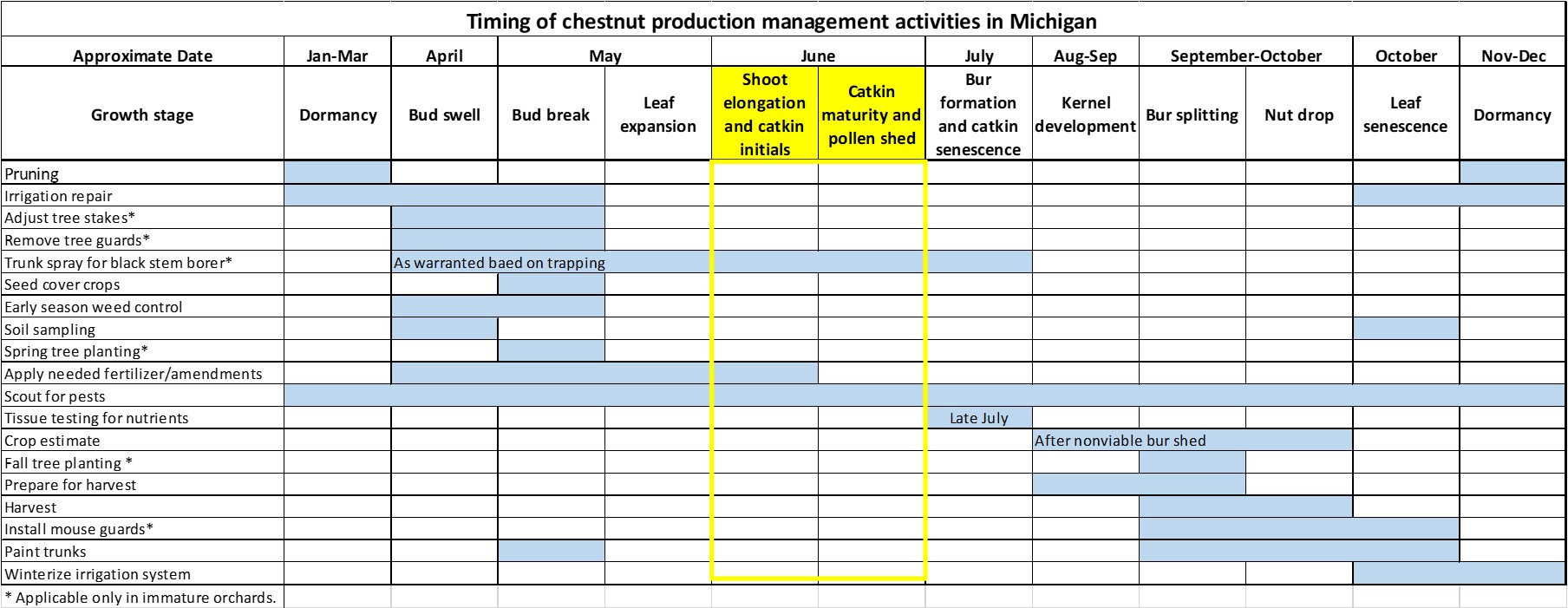
Catkins and flowers continue to develop, and pollen shed may have begun in some orchards. The window for nitrogen applications is closing. Tree planting is underway.
Northwest Michigan
Observed cultivars have almost mature catkins. European rose chafer is emerging at low levels. Gypsy moth caterpillars are causing localized issues.
West central Michigan
Observed cultivars have almost mature catkins. Weed control is good and irrigation systems are running. Black stem borer was not caught this week in traps. The first male flowers are becoming visible along the length of the catkins, indicating that pollen shed is imminent.
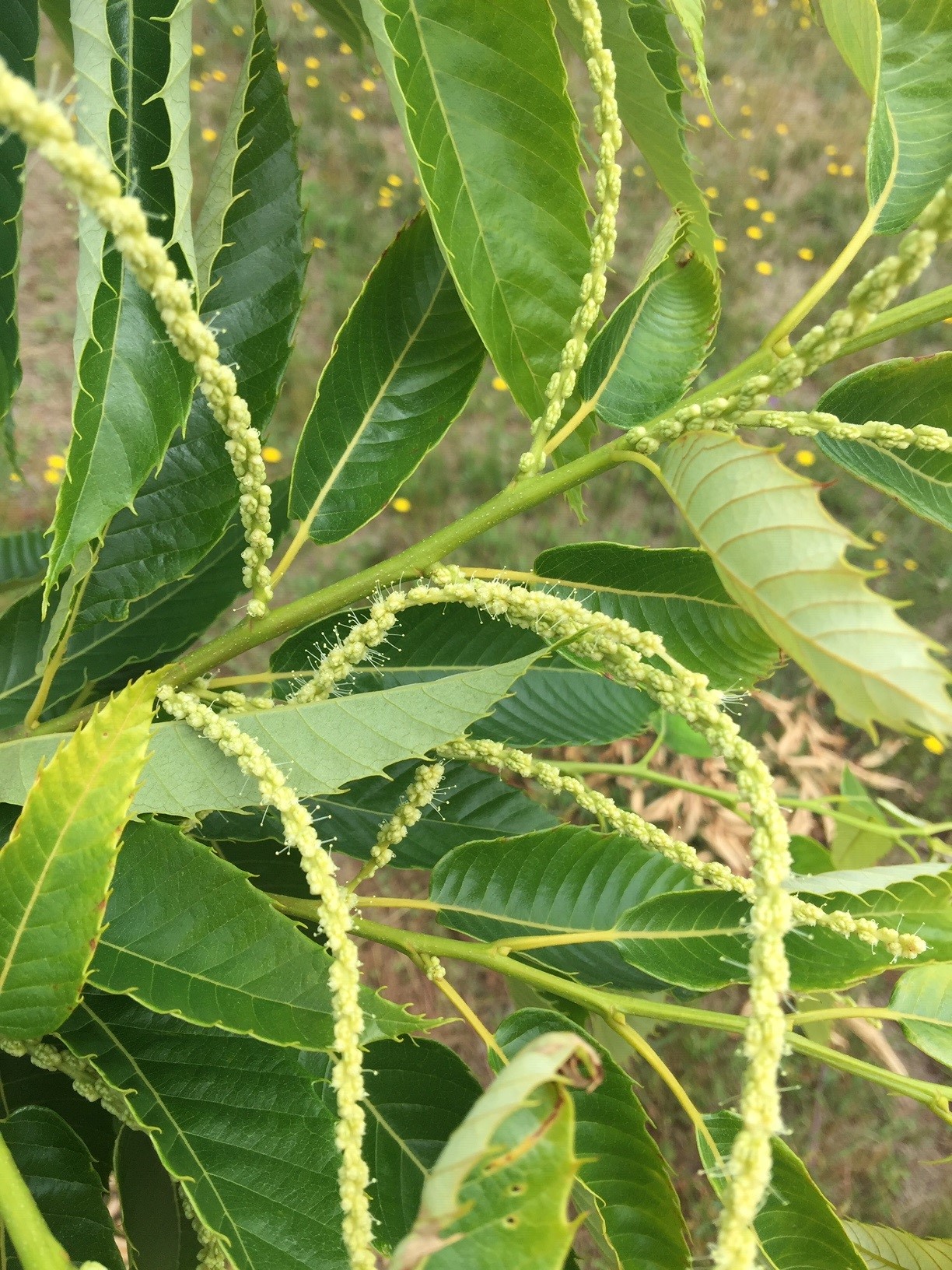
Southwest Michigan
Some cultivars are beginning to shed pollen. Potato leafhopper pressure continues.
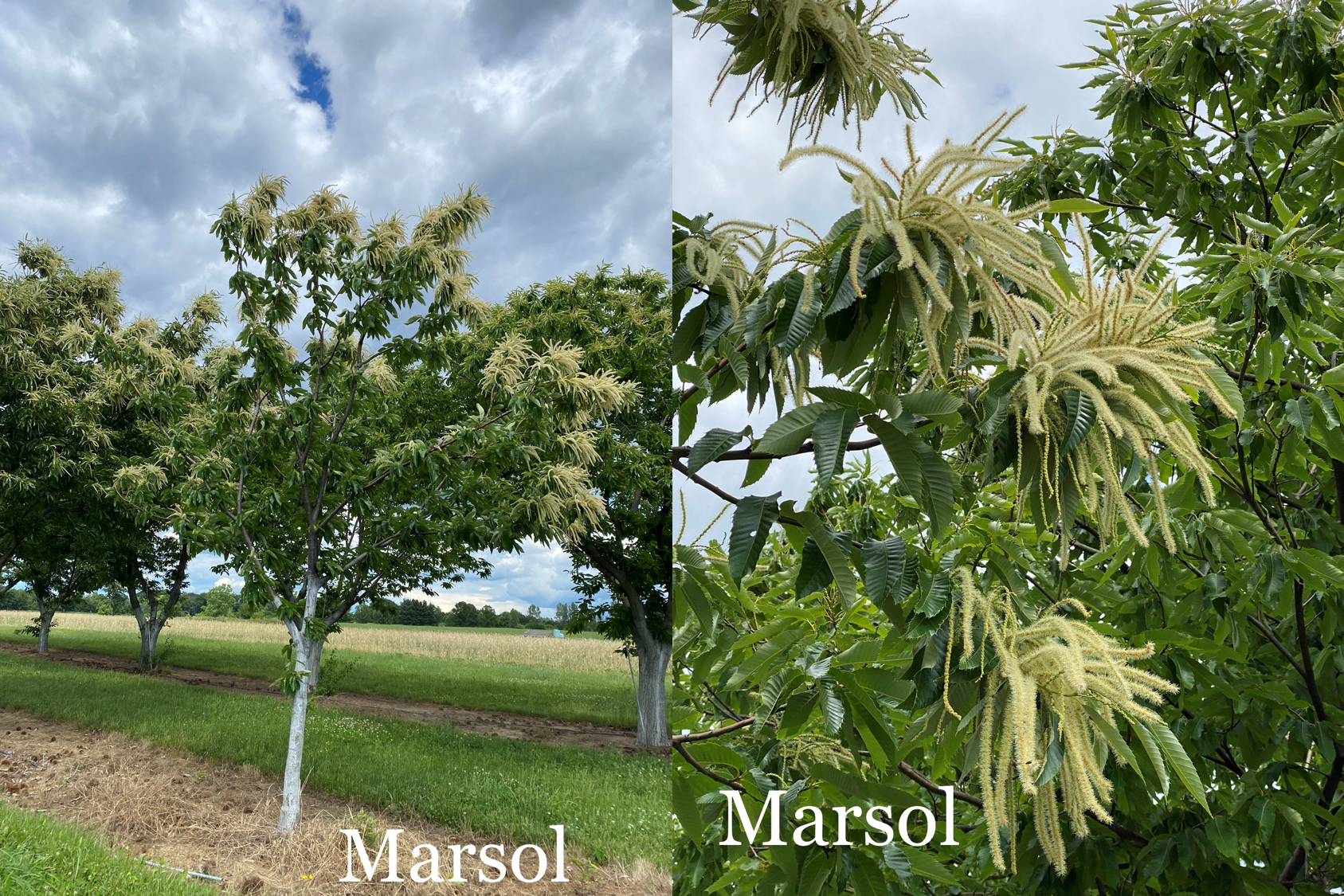
Fertility
Growers wanting to do a leaf tissue test this year should be sampling now. Sampling chestnut leaf tissue for analysis is similar to protocol in other crops, with a couple important caveats.
- Samples should be collected from this year’s new growth before vegetative terminal growth stops for the year. Terminal growth typically stops in early August as the trees start developing burs. Samples taken after terminal growth stops will not be accurate.
- Collect five to 10 leaves per tree from multiple terminal branches. Be sure to sample along the length of the new growth and do not just select the outermost leaves.
- Be sure to carefully read and follow the protocol from the testing facility you plan to utilize to ensure you receive a valid report.
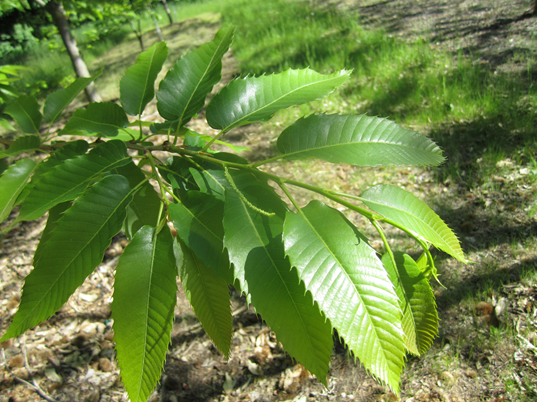
There are many labs that provide leaf analysis testing, a few are listed here for your convenience.
For more information on the general protocol for nutrient sampling, refer to the MSU Extension article, "Time to collect leaf samples for nutrient analysis."
MSU would love to receive a copy of your tissue test results! Please send them to Mario Mandujano at mandujan@msu.edu.
As a reminder, for nutrient management considerations, please reference pages 5-7 of the 2021 Michigan Chestnut Management Guide or the Nutrient Management section of the MSU Extension Chestnuts website.
Integrated pest management

Growers should be scouting orchards weekly to identify emerging issues. At this time, growers can actively scout for many pests, but should be particularly focused on Asian chestnut gall wasp, potato leafhopper and black stem borer (borer only in young trees less than 2-inch diameter).
Insects
Low to moderate numbers of rose chafer are being observed in southern Michigan. Rose chafers are considered a generalist pest and affect many crops, particularly those found on or near sandy soils or grassy areas. The adult beetles feed heavily on foliage and blossom parts of numerous horticultural crops in Michigan and can cause significant damage to chestnut orchards. Rose chafers can be particularly damaging on young trees with limited leaf area. Like Japanese beetle, rose chafers skeletonize the chestnut leaves but tend to consume larger pockets of tissue, with damage similar to caterpillar feeding than the fine lace-like leaf that results from Japanese beetle feeding.
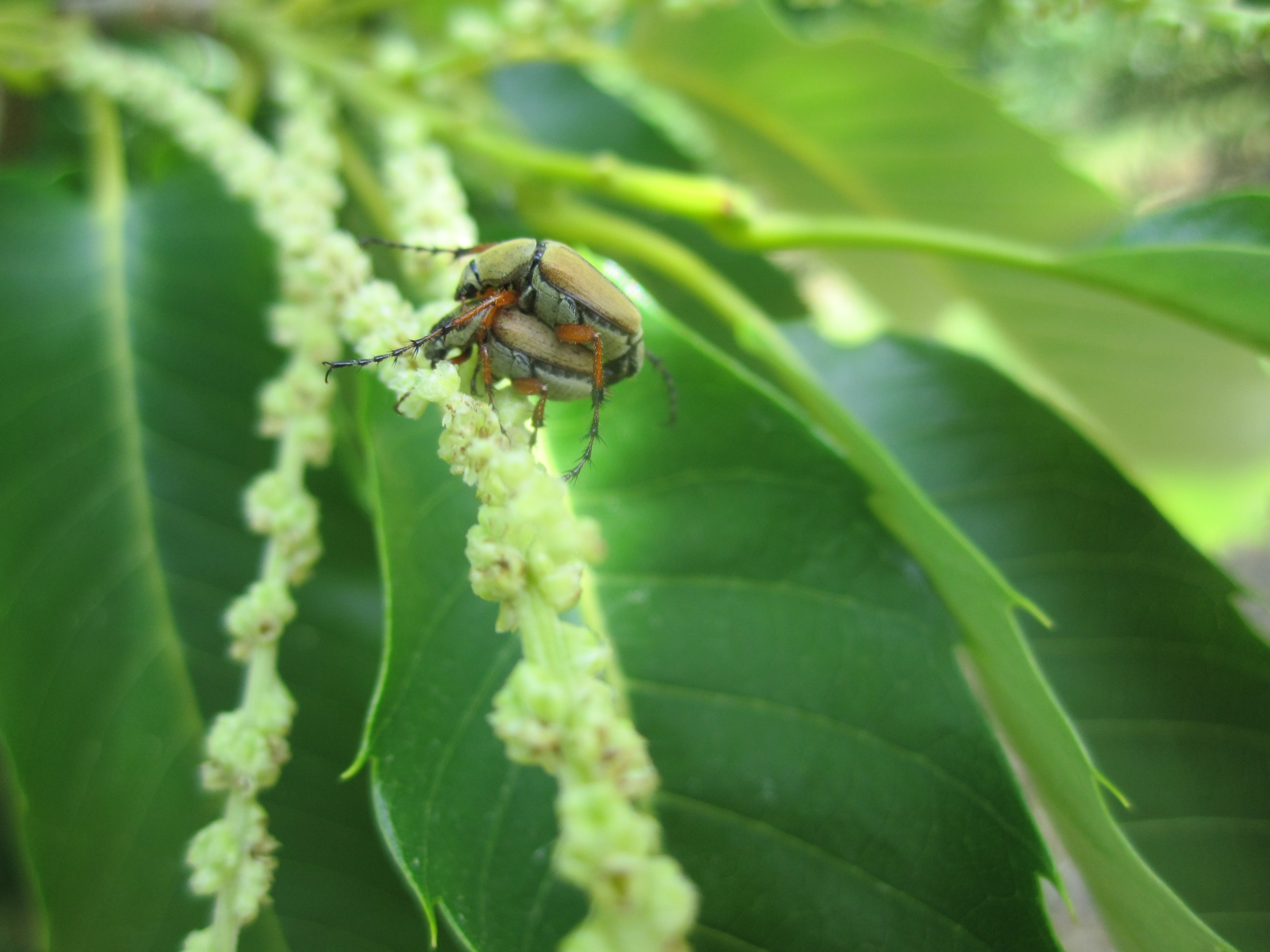
They are often found in mating pairs and fly during daylight hours. Visual observation while walking a transect is the best method for locating them. Because of their aggregating behavior, they tend to be found in larger groups and are typically relatively easy to spot. There are no established treatment thresholds or data on how much damage a healthy chestnut tree can sustain from rose chafer, but growers should consider that well-established and vigorous orchards will likely not require complete control. Younger orchards with limited leaf area will need to be managed more aggressively.
The rose chafer is a light tan beetle with a darker brown head and long legs and is about 12 millimeters long. There is one generation per year. Adults emerge from the ground during late May or June and live for three to four weeks. Females lay groups of eggs just below the surface in grassy areas of sandy, well-drained soils. The larvae (grubs) spend the winter underground, move up in the soil to feed on grass roots and then pupate in the spring. A few weeks later, they emerge from the soil and disperse by flight. Male beetles are attracted to females and congregate on plants to mate and feed. For more information on insecticides available for the treatment of rose chafer refer to the 2021 MSU Chestnut Management Guide.
Lecanium scale are being reported in high numbers in part of southwest Michigan and may be present in other locations. Lecanium scale is a soft scale pest that attaches to and feeds on many deciduous plants in Michigan, most notably hardwood trees. Lecanium scale populations can build to extremely high levels over a series of favorable years before crashing due to natural enemies and disease. When present in low numbers, lecanium scale are often overlooked and are of little economic or aesthetic significance.
Growers need to check chestnut branches for evidence of this pest. Scales may look a lot like leaf scars or bud scales, so a close inspection is important. Some infestations have only a few scales per branch while others are well-covered. One tell-tale sign of scale activity is the shiny film of honeydew that the scales excrete onto surfaces beneath the scales. Increased ant activity is also associated with scale insects as they collect the honeydew.
The honeydew from scale can act as a substrate for sooty mold. On agricultural crops, sooty mold can become an issue when it ends up on the fruit or nut being produced. Additionally, the scales removes sap when feeding which can weaken shoots and even cause shoot death in some cases. Vigorous and healthy trees and plants can tolerate some scale infestation, but if high populations of Lecanium scale are found, control programs should be considered, particularly on small trees. Ideal control windows occur in early spring when buds are dormant and again in July when scale crawlers hatch. For more information on lecanium scale management, refer to the MSU Extension article, "Lecanium scale numbers building on chestnut."
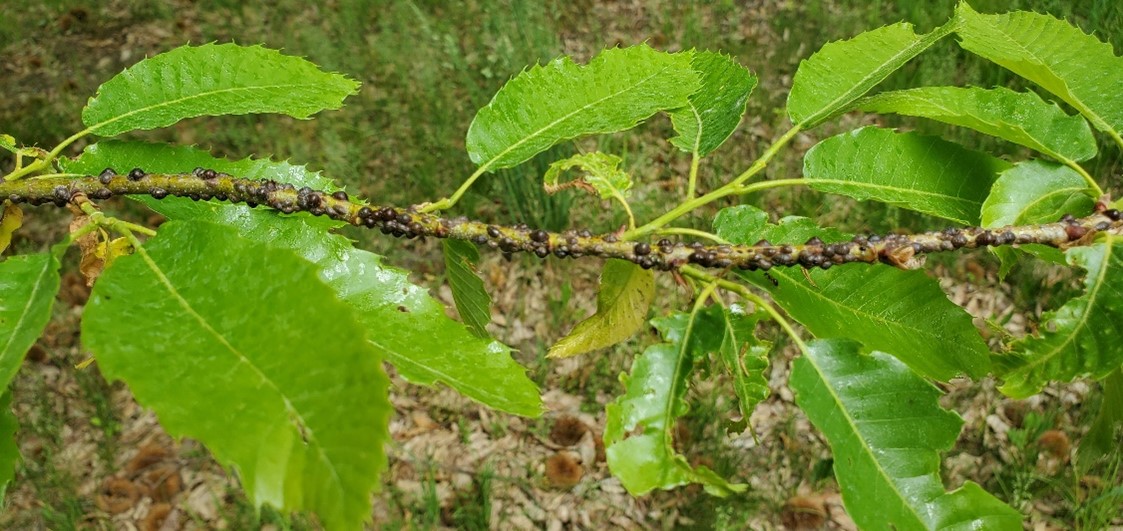
Potato leafhopper numbers continue to build in untreated orchards. Like many plants, chestnuts are sensitive to the saliva of potato leafhopper, which is injected by the insect while feeding. Damage to leaf tissue can cause reduced photosynthesis which can impact production and quality and damage the tree. Most injury occurs on new tissue on shoot terminals with potato leafhopper feeding near the edges of the leaves using piercing-sucking mouthparts. Symptoms of feeding appear as whitish dots arranged in triangular shapes near the edges. Heavily damaged leaves are cupped with necrotic and chlorotic edges and eventually abscise from the tree. Severely infested shoots produce small, bunched leaves with reduced photosynthetic capacity.

Adult leafhoppers are pale to bright green and about 1/8 inch long. Adults are easily noticeable, jumping, flying or running when agitated. The nymphs (immature leafhoppers) are pale green and have no wings but are very similar in form to the adults. Potato leafhopper move in all directions when disturbed, unlike some leafhoppers which have a distinct pattern of movement. The potato leafhopper can’t survive Michigan’s winter and survives in the Gulf States until adults migrate north in the spring on storm systems.
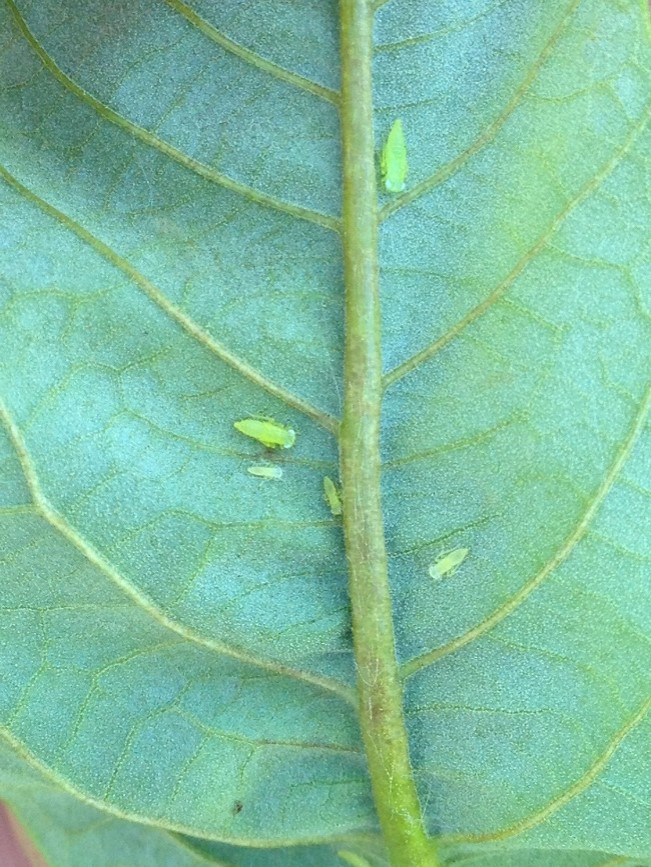
Scouting should be performed weekly as soon as leaf tissue is present to ensure detection early and prevent injury. More frequent spot checks should be done following rain storms which carry the first populations north. For every acre of orchard, select five trees to examine and inspect the leaves on three shoots per tree (a total of 15 shoots per acre). The easiest way to observe potato leafhopper is by flipping the shoots or leaves over and looking for adults and nymphs on the underside of leaves. Pay special attention to succulent new leaves on the terminals of branches. For more information on insecticides available for the treatment of potato leafhopper refer to the current Chestnut Management Guide.
Black stem borer, also known as ambrosia beetle, is a substantial pest of young orchards. Female beetles bore into small diameter trees and create chambers to lay their eggs. They also infect these chambers with a fungus that will feed their larvae. Boring damages young trees and can cause outright tree mortality. Borer emergence seems to be winding down this season but has been observed in previous years through mid-July. Trapping is the only way to be confident in the presence or absence of black stem borer at your farm. Emergence typically begins in early April, peaks in late May and tapers off by the end of June. Growers with young trees (commonly less than 2.5 inches in diameter but up to 4 inches) should be actively trapping for and managing against damage from this pest.
Refer to the MSU Extension article, “Black stem borer: An opportunistic pest of young fruit trees under stress,” for more information on biology, monitoring and management.
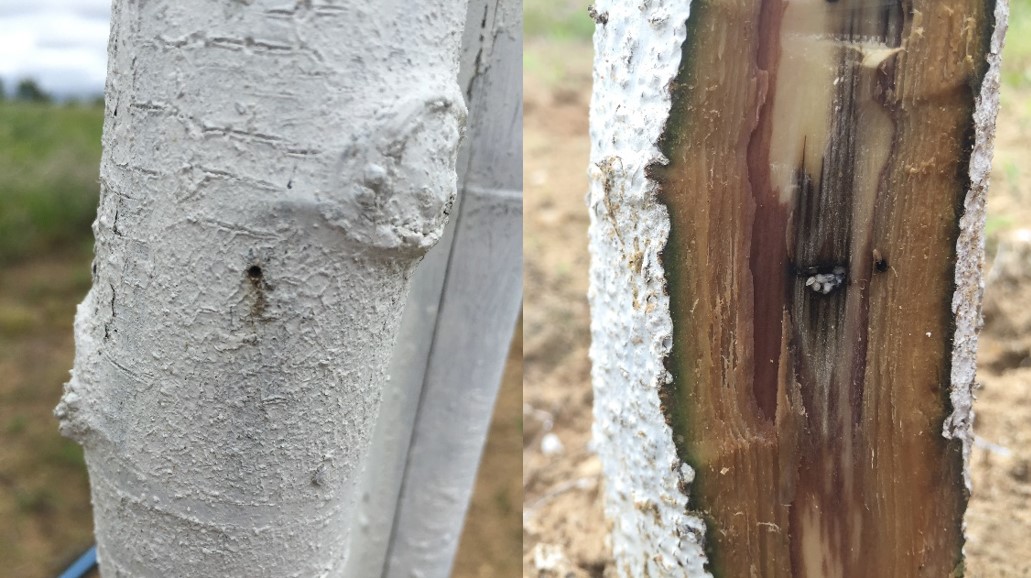
Gypsy moth larvae have also been observed feeding on chestnut leaves in southern Michigan. Growers with orchards adjacent to oak-dominated forests may see increased pressure and should keep an eye out for this pest. Insecticides containing Bacillus thuringiensis (i.e., Bt) will be effective, particularly when caterpillars are small. For more information on identifying gypsy moth and their lifecycle visit the MSU Gypsy Moth webpage.
Diseases
Existing chestnut blight infections (caused by Cryphonectria parasitica) can be observed at this time. To learn more about chestnut blight, visit the Pest Management section of the MSU Extension Chestnut website.
Weeds
Grassy weeds are particularly prevalent this season. Weed control looks very good in treated orchards. Most chestnut growers apply directed glyphosate applications in a band down the tree row to eliminate competition for nutrients and water. Glyphosate should be applied carefully to ensure it does not contact any part of the tree when applied.
Stay connected
For more information on chestnut production, visit MSU Extension Chestnuts and sign up to receive our newsletter. Also, join us for the 2021 Chestnut Chat Series every Wednesday at 12 p.m. from May 5 through Sept. 8, 2021. This series of interactive Zoom meetings will allow easy communication between producers and MSU faculty. These informal weekly sessions will include crop and pest updates from Rob Sirrine and Erin Lizotte. In addition, MSU faculty will drop in to address timely issues and provide research project updates. Bring your field notes too! We want to hear what’s going on in your orchard.
This material is based upon work supported by the National Institute of Food and Agriculture, U.S. Department of Agriculture, under Agreement No. 2017-70006-27175. Any opinions, findings, conclusions, or recommendations expressed in this publication are those of the author(s) and do not necessarily reflect the view of the U.S. Department of Agriculture.



 Print
Print Email
Email